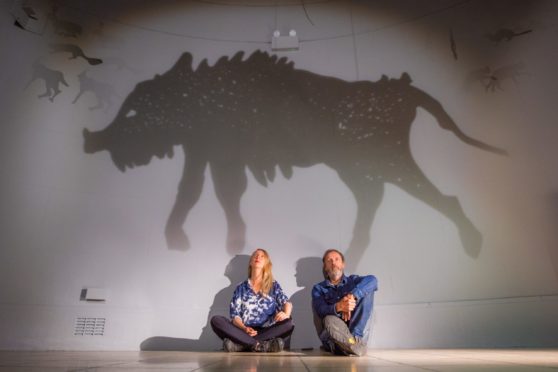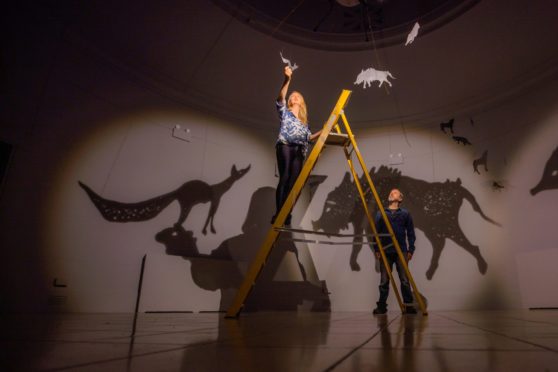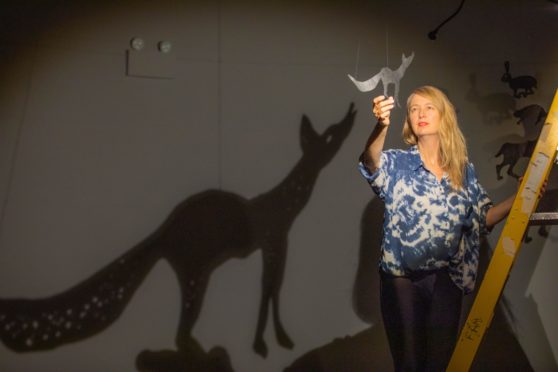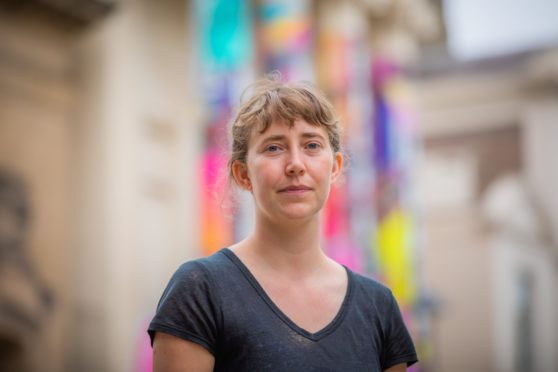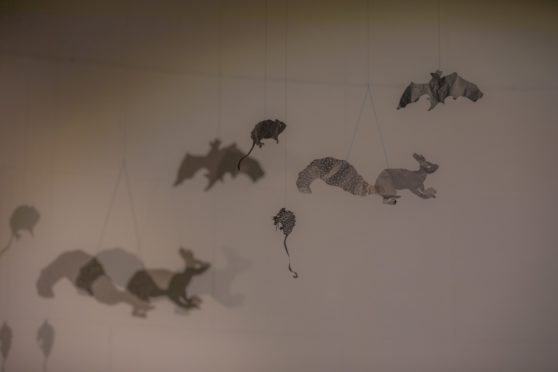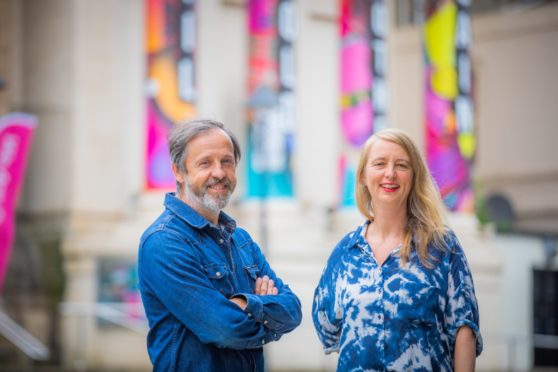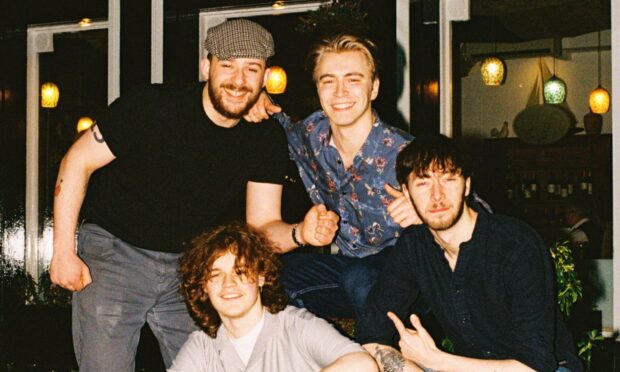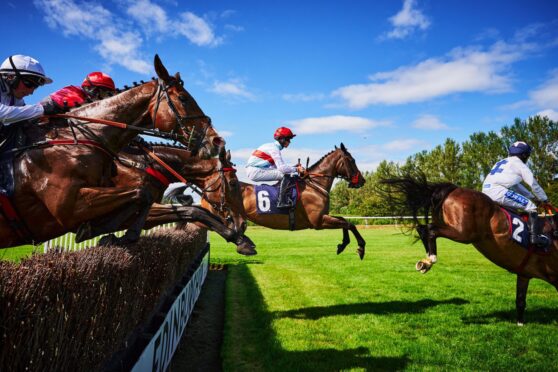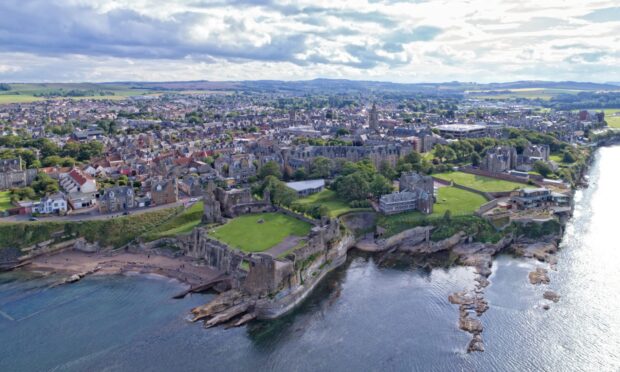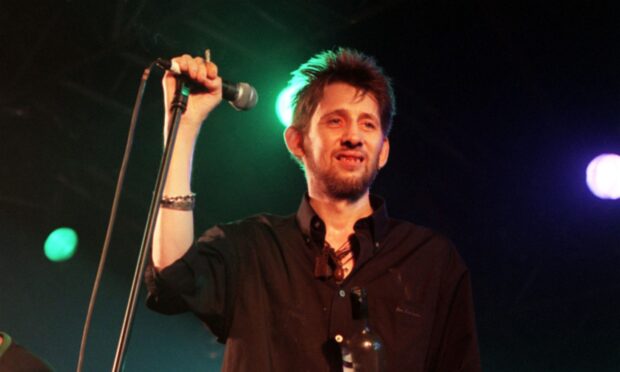For Glasgow-based artists Zoe Walker and Neil Bromwich, art and environmentalism go hand in hand.
And in their latest Perth Museum exhibition, the pair are shining a literal light on the dwindling numbers of Scottish mammals left in the wild.
Shadow World is a light-based installation where delicate cutouts of endangered animals are used to project looming shadows over the walls of Perth Museum and Art Gallery’s rotunda.
The hanging mobile of stylised silhouettes creates the impression of a dream-like space, with “shadows and traces” lining the walls like ancient cave paintings.
The idea, explain Zoe and Neil, is to create a futuristic “cave”, where visitors can imagine they are “seeing the shadows of animals that once were there”.
“When you go into the caves in Lascaux, in the south of France, you see the images that humans at that time were drawing on the walls of animals like the aurochs and the mountain lion,” explains Neil, 58. “These were common in Europe at that time, and are now extinct.
“So in a way, the Shadow World is kind of an echo of that. It makes us think about these things that might just become shadows of our memories, or traces that we find sometime in the future. Especially as things go further up the rest list and into extinction.”
Seeing red
The “red list” is a list of mammals which are endangered or regionally extinct, and according to the Mammal Society, a shocking one in four Scottish species are currently under threat of extinction.
Near the top of the list are the critically endangered harvest mouse and Scottish wildcat. At the last check, there were estimated to be just 100-300 wildcats left in the wild.
And the European wolf, at the very top level, is already regionally extinct.
Zoe, 52, reckons this is something of a hidden crisis, with Scots taking their native species for granted.
“I just think we’re still not aware that the animals in our own environment are so endangered,” she says sadly.
“We think about animals further afield. Polar bears, elephants, tigers, pandas – these kind of iconic animals.
“Of course it’s horrific that we’re losing them, but I think we’re still even less aware of our own environment. We just think these things will be here forever.”
She points out that even animals city-dwellers see often enough to be called a nuisance, such as red foxes and hedgehogs, or the farmer-lamented Eurasian beaver, are on the red list.
And by creating a “space for contemplation and reflection as well as generating imaginings of past, present and future” in Shadow World, the pair hope to raise awareness of the silent disappearance of these species.
Waking up to the dark side
“Our work kind of encompasses social and environmental justice, and increasingly, we see that the two things are connected,” Neil explains.
“Unless we look after ourselves as a species, and see that that includes looking after the natural world around us and other species, then we’re not going to find a solution to the predicament that we’re in.”
He’s right, and the exhibition, which runs until January 30 2022, coincides with one of Scotland’s largest ever environmental events – COP26.
The 26th UN Climate Change Conference will be held in Glasgow this year, and Neil hopes the buzz around the event will generate renewed interest in regional conservation.
“COP26 being in Scotland means people’s minds are really focused on the climate crisis now, more than ever before,” he says.
“It’s quite exciting, because we’ve got a second part of the show that’s going to be opening in early September which is The Serpent of Capitalism.
“And it’s an opportunity for the museum to kind of open its doors and celebrate reopening with a big art show that connects with this super important moment in our history.
“When you see what’s happening in different parts of the world, whether it’s soaring temperatures in Canada, floods that are happening in Germany, the disappearing of species because of that climate change… I think people are kind of waking up.”
It’s no secret that over the course of the pandemic, there has been a worldwide “waking up”, environmentally and politically.
From the Black Lives Matter movement to the record-breaking Covid vaccination push, it has been a time of intense culture shifts and heightened engagement with global issues.
Neil observes: “We’ve seen how quickly we can change as a species when we’re actually forced to. I really hope this is a moment we’re we all start collectively waking up and seeing the importance of conservation and nature.”
And Shadow World aims to bring that engagement right into the hands of Perth Museum visitors.
Nature on your doorstep
“During lockdown, a lot of people became more aware of nature,” Zoe explains. “So we were keen to do something that linked into that, and to make people more aware of the wildlife in the area as well.”
Indeed, now that “going for a walk” is a social highlight, it’s fair to say most people have reconnected with nature in some way over the past year. Gardening, foraging and hillwalking have all become cherished (and highly-Instagrammed) hobbies for Millenials like me.
But when it comes to local wildlife, there is a general lack of knowledge among the avocado generation and below. In fact, research by the RSPB has shown that only 27% of Scottish children have a good connection to nature.
Tragically, as Neil points out, a lot of the animals featured in the exhibition are ones that people may be more familiar with from children’s books like The Animals of Farthing Wood than from their lived experience.
“We’re a bit older so these are things we saw more regularly in childhood,” he laughs. “Suddenly they’re things you very rarely see. And they’re being put into that mythical space of stories that you read, rather than things that you actually encounter physically.”
The pair hope that some of the projects around Shadow World can help bring younger people closer to nature.
“Accompanying the exhibition are camera traps that the museum set up. They’ve already picked up loads of wildlife,” says Zoe. “Like beavers just outside from the river at the back of the museum. The images look quite like the shadows actually, which is really nice and interesting to see.
“There is wildlife like that which is actually accessible here, which is amazing.”
And there are plans for interactive workshops to put (paper) animals into the hands of little ones to help them connect with nature.
“All the silhouettes were hand-drawn and watercoloured, and then cut out by hand,” Neil explains.
“That process of making something with your hands has been a really fantastic connection with these animals.
“So we’re hoping to do a series of children’s workshops where we get them to make silhouettes themselves. They’ll be able to use these silhouettes on sticks to make shadows of their own in the gallery.
“Looking at nature and being creative with your hands helps to build that connection.”
Shadow World is running at Perth Museum and Art Gallery until January 30 2022. The Serpent of Capitalism will run from September 9 to November 14 alongside.
